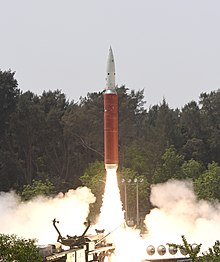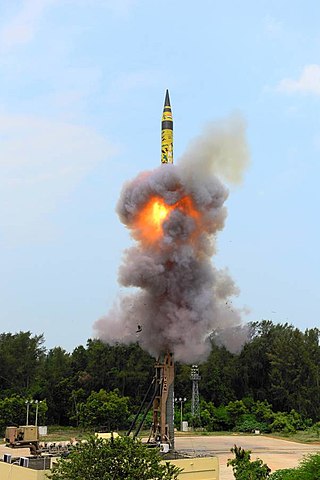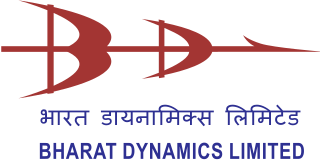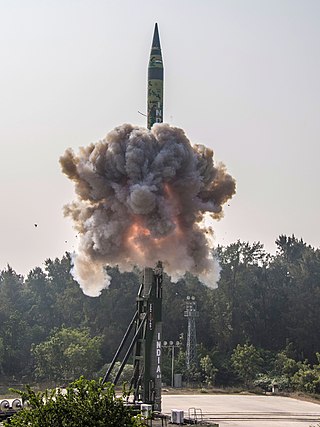History
Kingdom of Mysore

Mysorean rockets were the first iron-cased rockets that were successfully deployed for military use. Kingdom of Mysore utilised them effectively in the conflicts against the British East India Company. In addition, wheeled rocket launchers capable of launching five to ten rockets almost simultaneously were used in war. These rockets were re-engineered as Congreve rockets by British opening the door of development of advanced rocketry further in Europe. [1]
Post-independence
Indian government constituted a teamd Special Weapons Development Team in 1958 to study guided missile systems. [8]
The phase-I of missile program was limited to development of a first generation anti-tank guided missile (ATGM) by DRDO. Liquid fuel rocket engines based on Soviet missile system SA-2 were developed. Despite the overall failure of DRDO to develop a reliable ATGM, Indian laboratories had established facilities useful for machining and fabricating various parts of missile systems including gyroscopes, actuators, silver oxide-zinc batteries, booster and sustainer motors, air frame hard- ware such as fiberglass wings, ground launcher mechanisms, and wire spool winding and reeling mechanisms. India later excepted the French offer to produce SS-11B anti-tank guided missiles in 1970s. In another phase initiated in 1970s, Project Devil to reverse engineer Soviet SA-2 Guideline and Project Valiant to develop an Inter-continental ballistic missile too ended up with limited success but imparting experience and facilities for further research on missiles and space rockets. DRDO simultaneously focused on building a guidance package – an essential part of a long-range missile that determines its path and accuracy to hit a target. A platform-based inertial navigation system (INS) was developed and tested, on board an Avro aircraft, in 1974–75. Subsequently, an INS was built for both missiles and an aircraft, and this was tested in 1979 on board a Canberra aircraft. [9] [8] Decade of 1980s witnessed India gaining significant grounds in rocket technology and various technology demonstration programs began which became the basis of modern rocket systems in India. DRDL had developed competencies in the fields of propulsion, navigation and manufacture of materials. Indian Space Research Organisation had successfully tested India's first orbital rocket SLV-3 in 1980 whose first stage was used in Agni-TD ballistic missile for technological demonstration of Agni missile family. This subsequently led to the birth of the Integrated Guided Missile Development Program and Dr. Abdul Kalam, who had previously been the project director for the SLV-3 programme at ISRO, was inducted as the DRDL Director in 1983 to conceive and lead it. He decided that DRDL would pursue multiple projects in this area simultaneously. Thus, four projects were born under the IGMDP; Short-range surface-to-surface missile (code-named Prithvi), Short-range low-level surface-to-air missile (code-named Trishul), Medium-range surface-to-air missile (code-named Akash) and Third-generation anti-tank missile (code-named Nag). [10]
The Agni missile was initially conceived in the IGMDP as a technology demonstrator project in the form of a re-entry vehicle, and was later upgraded to a ballistic missile with different ranges. [11] As part of this program, the Interim Test Range at Balasore in Orissa was also developed for missile testing. [12]
The fourth phase of India's missile program stretched from mid-1990s to early 21st century. The phase has witnessed limited series production of DRDO's missiles and their deployment in battlefields. DRDO further embarked on programs in developing submarine-launched ballistic missile Sagarika, cruise missiles BrahMos, naval variant of Prithvi Dhanush. Spanning from 1970s to 2000s, India's missile programs have transitioned into a self-sustaining character. [13] Over the period from then, India has made improvements in technology of its missile systems and has produced many missile systems including ICBMs, anti-ballistic missiles, air-to-air missiles, cruise missiles and other systems.
Diplomatic and technological hurdles
After India test-fired the first Prithvi missile in 1988, and the Agni missile in 1989, the Missile Technology Control Regime (then an informal grouping established in 1987 by Canada, France, Germany, Italy, Japan, the United Kingdom and the United States) decided to restrict access to any technology that would help India in its missile development program. Some of the major technology which was denied, included:
- phase shifters for the phased array radars for Akash (denied by the USA).
- magnesium alloy used in Prithvi's wings (denied by Germany).
- servo-valves needed for the electro-hydraulic control systems of Agni and Prithvi.
- gyroscopes and accelerometers (denied by France).
- processors – Intel said it would not give India chips for the computers used in Prithvi and Agni.
To counter the MTCR, the IGMDP team formed a consortium of DRDO laboratories, industries and academic institutions to build these sub-systems, components and materials. Though this slowed down the progress of the program, India successfully developed indigenously all the restricted components denied to it by the MTCR. [12]
In 2011, the DRDO Chief V K Saraswat had stated that "indigenous content" in India's strategic missiles had gone up to such a level, with ring-laser gyros, composite rocket motors, micro-navigation systems etc., that "no technology control regime" could derail them any longer. [14]



















